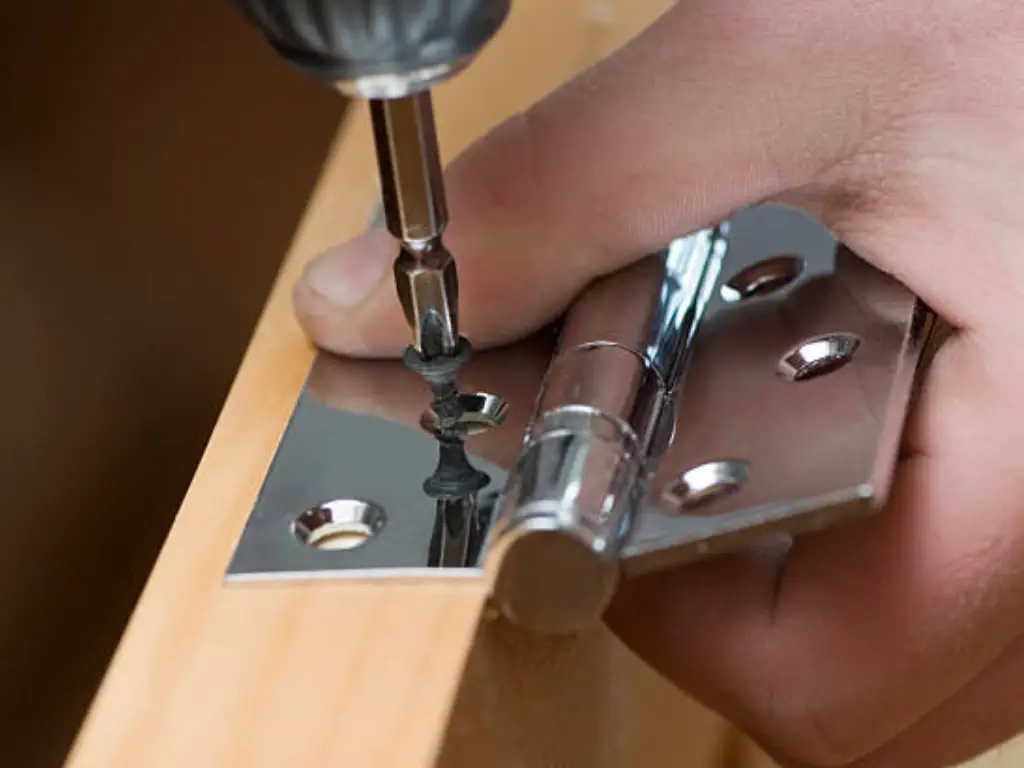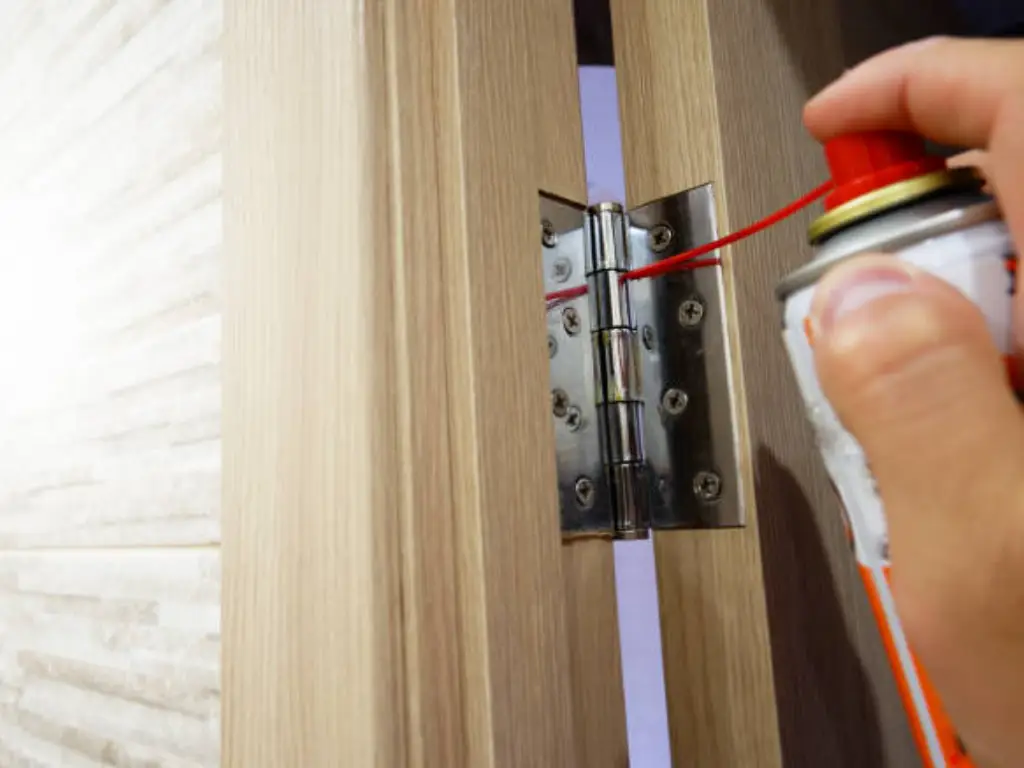Understanding the Basics of Door Hinges
Door hinges have a very important role in the operation of doors as they ensure that it is firmly connected to the door frame and allows for its unobstructed opening and closing. A hinge is made up of two plates joined by a pin, one plate attached to the door and the other to the frame. The types of hinges include butt hinge which is good for entrance doors, continuous hinge for use where there are many people coming in or out. Door hinges may be moved to correct such problems as sticking or sagging by knowing like pins that attach them, screw holes and various plates. First step in making improvements on how well a door functions should involve identifying indicators of bad hinging so that you can straighten it properly.
To fix the door’s hinges, first identify the side of hinge responsible; whether it is on the top corner, bottom part or attached side. This may be due to wetness or exhausted parts that lead to misplacement. The highest end corner of a door will dropwhile its lower hinge loosens thus affecting its functionality. Homeowners who have knowledge about the structure and working principles of hinges can easily point out where their doors are failing in order for them to freely close backwards and forwards as required.
Tools Needed to Adjust Door Hinges

To effectively change a door hinge, the necessary tools have to be in place. They include a screwdriver for tightening or replacing screws, wrench to adjust any nuts and bolts, and hammer used together with chisel to modify mortise area if need be. For more detailed adjustments, utility knife can be used to scrape off excessive wood or alternatively use pliers to eliminate hinge pin for lubrication or substituting it. It is advisable that one keeps around wood plugs and shims which help fill old screw holes and also adjust the hinge depth. A level can enable us ensure that the door is plumb plus aligned squarely within its frame.
A well-equipped tool box simplifies this task of adjusting door hinges, thus making it possible for even an amateur DIY’er. By having such items as a screwdriver, wrench, hammer and chisel you can precisely deal with most problems connected with hinges . Apart from that , different length screws particularly long ones for the top hinge will add extra strength to the door which may be vital especially because of age old houses where wood may have gotten weakened over time.
Step-by-Step: Adjusting Hinge Placement
| Step | Action | Tools & Materials | Notes |
| 1 | Inspect the hinge side in the closed position. | Phillips screwdriver | Check for loose screws or misalignment. |
| 2 | Replace screws to address door problems. | Longer screws, matching length and diameter | Longer screws will help with stability and withstand compression. |
| 3 | Make corrections to hinge position. | Wooden plugs or filler, screwdriver | Adjust position if door continues to sag after tightening screws. |
| 4 | Mark new screw holes. | Utility knife, level | Ensure door is straight in the closed position before marking. |
| 5 | Secure the hinge. | Drill or nail gun, screws | Firmly secure the hinge and make sure it resists compression. |
Step 1: Inspect the Hinge Side
Start by thoroughly examining the hinge side of the door while it is in the closed position. This involves carefully examining each element of the hinge to ensure that there are no loose screws nor misaligned hinge plates. In case any of the screws happen to be loose, use a Phillips screwdriver to fix them tightly into place. This is a crucial initial step for ensuring stability in the hinges, setting the stage for further corrections.
Step 2: Replace Screws
If during your inspection to solve door problems you discover that existing screw holes have enlarged or that the hinge has shifted, replacing them with longer screws will help to stabilize the hinge more effectively and withstand compression. To ensure they can penetrate deeply into the door frame for adequate support, select screws with matching length and diameter.
Step 3: Adjust Hinge Position
After tightening the screws, if the door continues sagging, a change of position in the hinges might be necessary, calling for corrections. Begin by removing the long screw and filling up the original hole with wooden plugs or another suitable filler. Then slightly move the hinge up or down as required on the door frame to counteract the sag.
Step 4: Mark New Screw Holes
After relocating the hinge, use a utility knife to mark the positions for new screw holes onto the door frame to avoid future door problems. Make sure the door is straightened in the closed position before marking, to prevent later issues like tilting or misalignment.
Step 5: Secure the Hinge
Put holes at these marked locations using a drill or nail gun, then firmly secure the hinge in its new position to ensure it can resist the compression of the door’s weight. Confirm that all screws are well tightened and that both hinge plates lie flat against the door and frame.
Solving Common Problems with Door Hinges
Some usual door hinge problems are sticking, squeaking, and sagging; these can be resolved by making simple adjustments. Sticking or binding doors usually result from hinges that have either sunk into the frame of the door or have become loose. To fix this, one should adjust the depth of the hinge in the mortise or replace it with a new one that fits properly in the existing cutout. Squeaking can be solved by lubricating hinge pin and knuckles using products specifically made for that purpose while not harming wood.
In case a door sags causing a big gap at its top corner, changing its position on the hinge or tightening screws might work best. In case these remedies do not rectify sagging, then replacing it with a new hinge of stronger build could be necessary. Additionally, looking for things such as warped wood or a shifted frame will help establish what is wrong with doors hence coming up with more successful long-term solutions.
Techniques for Ensuring a Smooth Swing

Ensuring your door opens and closes smoothly entails maintaining it in a straight line and making sure hinges work perfectly. Regularly inspecting the hinge for loose screws, wear, tightening them if necessary or substituting them with longer screws so that the hinge remains firm on the door and frame. Also by tweaking the hinge plates to make sure they remain flat against the door and frame, you can prevent uneven movement and possible floor or frame scraping.
If you have difficulties closing your door, use shims to adjust its hinge either outward or inward; this will help place it properly within the frame. This slight change will give a better swing as well as closure ensuring no gaps or sticking points are left over. Dust is one of an accumulation of dirt which may impair its functioning; thus regular checks on lubrication while wiping these joints clean should be done to avoid such instances of being jammed up by dusts.
How to Fix a Binding or Sticking Door
A door that binds or sticks is usually due to hinges that are not aligned properly or a hinge mechanism with an accumulation on it. First, check if the screws on the hinge plates are tight and if the hinge pins have been seated rightly. Then inspect the frame and the part of the door edges, particularly the top corner of the door, for any signs of warping due to moisture damage which might have led to their sticking together. If there is a large gap or excess wood, sand down this area or use a planer for this purpose so that your door can easily move.
If changing the physical factors does not resolve the issue, consider how to adjust the hinges to realign the door. This might involve deepening the mortise to set a deeper hinge into the frame or bending it slightly to alter its angle. Make these adjustments gradually, being careful not to overshoot due to overcompensation, as excessive alteration can lead to further misalignment.
Maintaining Your Door Hinges for Longevity

The longevity of door hinges is increased when they are well maintained, and this also ensures that they stay in good condition. Regularly checking and tightening of hinge screws, especially the bottom hinge, is essential to prevent sagging and misalignment. For external door hinges, which face the weather elements, the best way to prevent corrosion involves applying a non-greasy lubricant to the hinge pin and knuckles. Also, keep an eye on moisture levels in your home, particularly if you have wooden doors. Excessive moisture can cause the wood at the bottom of the door to swell, thereby impacting the proper functioning of the hinge.
Additionally, replacing older hinges with high-quality, durable alternatives will extend their lifespan. Opt for stainless steel or brass hinges, as these materials are less prone to rust than others. Also, by adding weatherstripping around exterior doors, you can maintain alignment during weather changes, protecting them from adverse atmospheric conditions over time.
Safety Tips When Adjusting Door Hinges
In case of adjusting the door hinges, safety should always come first. Ensure that the door will not fall during the adjustments to avoid causing harm to the people around. Always ensure that you use the right tools for the job so that you do not get injured. When using screwdrivers, always ensure you use the correct ones so that your hand does not slip off and when using power tools like drills or even using a chisel, ensure you wear protective gear like goggles to protect your eyes from flying particles.
Take care not to pinch your fingers. Do not put your fingers near the hinge joints when the door is in motion, as this will reduce the chances of your fingers being trapped. Therefore, by adopting these safety measures, one can fix door hinges without causing any mishap and thus make the process safe and efficient.
Conclusion
It is a basic skill for any homeowner to learn how to fix door hinges since it provides a simple solution to improving the performance of doors and increasing the durability of doors. Every process, from the initial stages of learning about doors to making precise adjustments, helps create a door that functions optimally. Proper maintenance and correct adjustment methods can help avoid problems such as door sagging, sticking or squeaking thus making your home more secure and comfortable. If you have the right equipment and some basic knowledge, you can always make sure that your doors are in the best condition possible and will not only look good but also function properly.
As you adjust the door hinges, ensure that you are very patient and that you are very accurate. Do not rush into solving the problem and make sure you identify the problem correctly, assemble the right equipment and make gradual changes. This way not only addresses the current problems but also prevents future complications, thus guaranteeing the proper functioning of doors for many years. Whether you are living in an old house with doors that have character and hinges that are not perfectly aligned, or in a new house that has some alignment problems, learning how to fix door hinges is one of the most important home repair skills that every homeowner should know.






